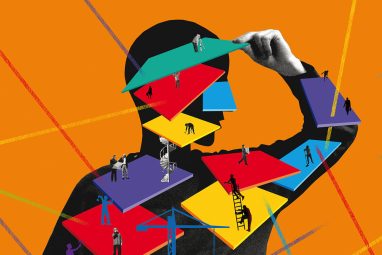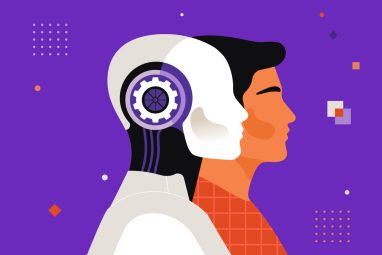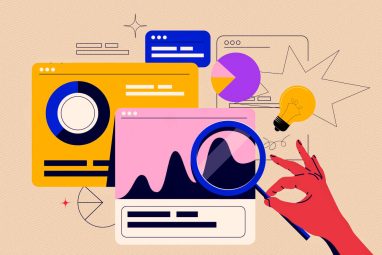People Leaders Need Data-Driven Technology Too
Data can help companies better understand and improve the employee experience, leading to a more productive workforce.
News
- More than 80% of Saudi CEOs adopted an AI-first approach in 2024, study finds
- UiPath Test Cloud Brings AI-Driven Automation to Software Testing
- Oracle Launches AI Agent Studio for Customizable Enterprise Automation
- VAST Data and NVIDIA Launch Secure, Scalable AI Stack for Enterprises
- How Machine Identity Risks Are Escalating in AI-Powered Enterprises
- How Agentic AI Is Reshaping Healthcare

Our behavior at work is changing. While this has been a constant for as long as people have been working, the pace of change has accelerated tremendously over the past few years.
The pandemic permanently shifted traditional expectations of the workplace and prompted workers to begin rethinking the notion of job security and how work meaningfully fits into their lives. The resulting shifts in employee sentiment have left employers to navigate new expectations of flexibility, career choices and job roles, and purpose.
In fact, employees are increasingly prioritizing a deeper range of factors at work, including a company’s ethics and alignment in values. In ADP Research Institute’s annual global study of more than 32,000 workers from 17 countries, “People at Work 2022: A Global Workforce View,” 76% of workers said they would consider looking for a new job if they discovered that their company had an unfair gender pay gap or no diversity and inclusion policy.
These evolving expectations are occurring at a time when the stakes have never been higher for companies. In the current labor market, where there are more jobs than job seekers, recruitment and retention are among the most pressing business issues for employers. This is a critical moment for businesses to think holistically about their employer brands and build meaningful connections with their people.
How can companies begin to address challenges with their own employer brands? The answer involves truly understanding the full cycle of the employee experience and supporting workers’ needs as they evolve.
That journey certainly starts with recruitment and hiring, but it spans career growth and development, workplace experience — from inclusion and culture to team development and productivity — and health and well-being.
Tapping into data to manage your people resources begins with looking at the user experience of the tools you use and the unique priorities and needs of your workforce. Those two focus areas should remain in parallel throughout the employee journey, as you work toward the goal of making your people’s lives easier and better.
Designing Through Data
Most human capital management (HCM) solutions take a one-size-fits-all approach, but companies’ people needs vary across a spectrum based on their geography and size, organizational design, and technical requirements. This is where data really comes in: You need to understand your unique workforce to effectively manage it. Is your workforce fully remote, spanning multiple states or even countries? How diverse is your workforce across gender identity and expression, race, ethnicity, age, and veteran and disability status? What types of learning opportunities and benefits might best enrich their paths forward? When you’re managing people, decisions need to be personalized and tailored to them, which can be a challenge when making decisions at scale.
Data offers a more complete picture of the person as well as the environment in which the work is happening. An experience that meets people where they are saves time for both the employee and the employer, helping to prevent problems, remove low-value work, and improve employee well-being.
To have a positive impact on workers’ experiences and lives, HCM technology should achieve four key outcomes:
- The solution should work intuitively, helping employees manage their work faster and more easily.
- It should be insightful, offering trusted data insights to provide greater confidence in decision-making.
- It should be personal, showing only what the employee needs and adapting to their preferences.
- It should operate proactively, anticipating what comes next and surfacing the right tools and resources in the moment of need.
Let’s look at how putting these four principles into action can help in tackling the challenges facing businesses today.
Intuitive: Solving Problems in Real Time
Intuitive solutions are designed specifically to help people get things done faster, in fewer steps. They surface what matters, when it matters. Understanding how people work is critical in building inventive solutions. To match the way your workers want to work, your tools must map to the way those workers think and act.
For example, separating functions like payroll processing, time tracking, and benefits management across separate tools or portals is less intuitive, because time, pay, and benefits are all intertwined from an employee perspective. Lacking intuitive solutions for these types of experiences leads to unnecessary friction and may mean that employees don’t recognize the full benefits of their employer’s offerings.
The key to designing solutions to address these challenges is starting with the employee’s goals in mind. Take the time to understand how the current design is performing: Are your employees encountering challenges? Do they have new ideas for features that would be valuable in their lives?
Employee listening is a rising trend that can help support intuitive design. Leading companies are deploying all kinds of survey tools and other listening posts to tap into what’s on their workers’ minds. This is inclusive of classic tools like onboarding and exit surveys that take the pulse of a workforce, as well as newly emergent ones that leverage machine learning to look at activity patterns and sense whether workers might be experiencing burnout or engaging in what is now commonly referred to as quiet quitting.
Insightful: Driving Confident Decisions
Experiences that are rooted in insights can drive more informed decision-making, both for the employee and the employer. In an age where information is plentiful, it’s more important than ever to limit any noise and offer solutions that can help people take meaningful action.
Diversity, equity, and inclusion offers an example of how data stories are human stories within organizations. In an environment where greater focus than ever before is being placed on building more diverse and inclusive workforces, working toward fairness in hiring and compensation is not just the right thing to do — it’s critical in attracting and retaining talent and creating more opportunity for advancement.
As companies take a harder look at leveling the playing field, they need tools to “see” where the inequities are and how to address them financially. This requires extensive benchmarking data that enables comparisons across position, function, geography, and industry.
Experiences that are rooted in insights can drive more informed decision-making, both for the employee and the employer.
Technology-driven advancements are helping companies identify and close those gaps — from skills matching, which helps find capable candidates from nontraditional backgrounds, to sentiment analysis, which assesses employee perceptions on the overall level of inclusion in the workplace. An example at ADP is our Pay Equity Dashboard, which allows clients to pinpoint areas of inequity and take action by giving additional pay to workers deemed to be below benchmark from a pay equity perspective and implementing solutions to avoid future instances of inequality.
Personal and Proactive: Evolving With the User
Personal and proactive user experiences grow with the user. They include only what an employee needs at first, seamlessly adapting to the way they grow in their job. Throughout the employee journey, these types of solutions continuously learn and anticipate ways to help the employee succeed.
One of my favorite examples of all four design elements in play is what we call the “birthday nudge.” In our Retirement Services portfolio, when we wish our participants a happy birthday, we proactively nudge them to think about their retirement, including providing insight into how ready they are for retirement and how much more ready they could be if they increased their savings rate. It’s personalized with their birthday, retirement date, and savings rate; it provides insight in terms of what the expected impact on their future earnings could be; and it’s proactive in terms of helping them think about their long-term goals.
Whether they’re providing learning recommendations tailored to an employee’s role and growth trajectory, benefits decision support based on their needs and goals, or intelligent coaching tips tailored to help leaders cater to their team’s strengths, such tools can help elevate the HR function and the experience an organization provides to its people.
Data lies beneath so many of the decisions we make in our everyday lives — from the products we purchase to the choices we make for our families. Data needs to drive how leaders manage their people as well. We have the tools to understand our people data, identify insights, and take positive actions that can make a meaningful difference in people’s lives. Today’s focus on employees’ careers, financial needs, and overall well-being has only touched the surface. Regardless of whether the hiring landscape is tight or there is slack in the system, having a happy, engaged, and productive workforce is the key to thriving in any economy.





